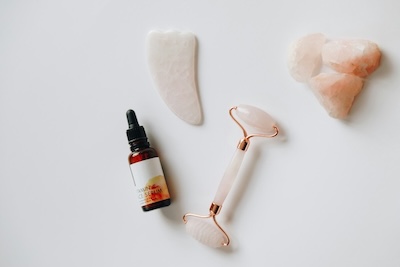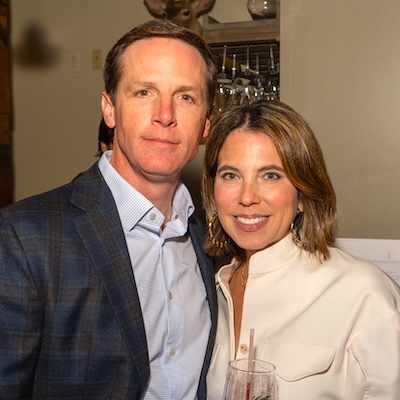Let’s delve into the current trends in plastic surgery, exploring the most popular procedures, the changes in the industry over the past few years, the driving forces behind these trends, and the demographic data illustrating who is opting for these enhancements.
Plastic surgery has evolved significantly over the past few decades, transitioning from a niche practice to a mainstream phenomenon. Once primarily associated with media stars and the ultra-wealthy, plastic surgery is now accessible to the masses, making it a ubiquitous part of modern culture. As techniques have advanced and societal perceptions have shifted, more people are turning to surgical and non-surgical procedures to enhance their appearance and boost their confidence.
Procedures and Their Popularity
Breast Augmentation
Breast augmentation remains one of the most sought-after procedures. This procedure appeals to a broad demographic, offering options for both subtle enhancements and more noticeable changes.
Liposuction
Liposuction is a procedure that removes excess fat from specific areas of the body. It’s popular among individuals seeking to contour their bodies and achieve a slimmer silhouette. Advances in technology, such as laser-assisted liposuction, have made the procedure less invasive with quicker recovery times.
Rhinoplasty
Commonly known as a nose job, rhinoplasty can alter the shape, size, and structure of the nose. It’s frequently chosen by individuals looking to improve facial harmony or correct breathing issues. This procedure has seen a steady increase in demand due to its significant impact on overall facial aesthetics.
Facelifts and Non-Surgical Alternatives
Facelifts aim to reduce signs of aging by tightening sagging skin and muscles on the face and neck. However, non-surgical alternatives like Botox, dermal fillers, and thread lifts have surged in popularity due to their minimal downtime and immediate results.
"When performing a facelift, my goal is to prioritize the safety and well-being of our patients and exceed their expectations, providing long-lasting rejuvenation. We often use the analogy of a conveyor belt to illustrate the transformative effects of the surgery. We envision picking them up on the conveyor belt from their current stage of aging, transporting them back in time by 10 years, and placing them back down on the conveyor belt. Although the conveyor belt of time keeps moving, and the natural aging process continues, our patients benefit from a significantly improved starting point post-surgery, allowing them to age gracefully and maintain a more youthful appearance.”
Dr. Daniel Rousso, Rousso Adams
Tummy Tucks (Abdominoplasty)
A tummy tuck is designed to remove excess skin and fat from the abdomen while tightening the underlying muscles. It’s particularly popular among individuals who have experienced significant weight loss or post-pregnancy changes.
Body Contouring
Body contouring encompasses various procedures designed to reshape and enhance the body’s contours. Procedures like arm lifts, thigh lifts, and body lifts are popular among individuals who have undergone significant weight loss and want to remove excess skin and improve their body shape.
Hair Restoration
Hair restoration procedures, including hair transplants and scalp micropigmentation, have become increasingly common. Hair transplants involve moving hair follicles from one part of the body to the thinning or balding areas, while scalp micropigmentation creates the illusion of a fuller head of hair.
Brazilian Butt Lift (BBL)
The BBL involves transferring fat from other parts of the body to the buttocks to create a fuller, more lifted appearance. This procedure has gained immense popularity in recent years, driven by cultural influences and the desire for fuller body shapes.
Blepharoplasty (Eyelid Surgery)
Blepharoplasty is a surgical procedure that aims to correct droopy eyelids by removing excess skin, muscle, and sometimes fat. The procedure can also help improve vision in cases where droopy eyelids obstruct the field of view.
Injectable Treatments
These are not surgeries. Injectable treatments, including Botox and dermal fillers, have become staples in the world of cosmetic enhancements. Botox is used to relax facial muscles and reduce the appearance of wrinkles, while fillers add volume to areas like the lips, cheeks, and under the eyes. These treatments are favored for their quick results, minimal downtime, and non-invasive nature.
CoolSculpting
CoolSculpting is a non-invasive fat reduction treatment that uses controlled cooling to freeze and eliminate stubborn fat cells. It’s a popular alternative to liposuction for those looking to target specific areas of fat without surgery. The procedure is often used on the abdomen, flanks, thighs, and double chin.
Changes in the Last 5 Years
Technological Advancements
Innovations in plastic surgery techniques and equipment have made procedures safer, less invasive, and more effective. For instance, the development of advanced laser technologies has improved the precision and outcomes of various treatments. Minimally invasive procedures with shorter recovery times have become increasingly popular, attracting individuals who might have been hesitant to undergo traditional surgery. The introduction of 3D imaging and virtual reality has also revolutionized the consultation process. Patients can now visualize the potential outcomes of their procedures before committing, leading to more informed decisions and higher satisfaction rates.
Increased Focus on Self-Care and Wellness
People are prioritizing their physical along with their mental well-being. Individuals are seeking treatments that enhance their appearance and boost their confidence. The concept of “tweakments”—subtle, non-surgical enhancements—has gained traction. The rise of wellness culture has also led to an increased interest in procedures that promote a healthy and active lifestyle. For example, body contouring treatments like CoolSculpting and minimally invasive fat reduction procedures have become popular among those looking to achieve their fitness goals.
Pandemic Influence
The COVID-19 pandemic has had a profound impact on the plastic surgery industry. During lockdowns, many people had the opportunity to work from home, which provided the perfect cover for post-surgical recovery without the need for extended time off work. The rise of video conferencing also made individuals more aware of their facial features. The pandemic also prompted a shift in priorities, with many people focusing on self-care and personal well-being. The increased emphasis on self-improvement and mental health led to a rise in interest in aesthetic procedures as a means of boosting confidence and overall happiness. As a result, the plastic surgery industry saw a notable increase in inquiries and procedures during and after the pandemic.
Social Media and Celebrity Influence
Social media platforms, especially Instagram and TikTok, have played a pivotal role in shaping plastic surgery trends. Influencers and celebrities openly discussing their procedures have normalized plastic surgery and reduced the stigma associated with it. Before-and-after photos, video testimonials, and live procedure broadcasts have demystified the process, making it more accessible to a broader audience. Celebrity endorsements and the “Kardashian effect” have particularly influenced the popularity of procedures like Brazilian Butt Lifts and lip augmentations. The desire to emulate the looks of popular figures has driven many individuals to seek out similar enhancements.
What’s Driving This Change?
"Pop culture and media often portray the idea that facial plastic surgery should be drastic and unnaturally obvious, and many seek to alter their appearance to fit these unrealistic beauty expectations. I believe cosmetic design is meant to enhance your beauty, instill confidence through natural results, and allow each patient to remain true to themselves.”
Dr. Austin Adams, Rousso Adams
Cultural Influences
The rise of the “selfie culture” and the desire for a photogenic appearance have fueled the demand for facial procedures. Additionally, the influence of celebrities and social media personalities who openly discuss their cosmetic enhancements has normalized plastic surgery and made it more aspirational. The beauty standards promoted by popular culture figures have also contributed to the popularity of certain procedures. For example, the desire for a defined jawline, fuller lips, and high cheekbones has driven the demand for injectables and facial contouring treatments.
Technological Advancements
The development of new materials and techniques has also expanded the range of available procedures. For example, the introduction of high-quality silicone implants and innovative fat transfer methods has improved the outcomes of breast augmentation and Brazilian Butt Lifts.
Changing Perceptions of Beauty
This change is evident in the increasing popularity of procedures that enhance natural beauty. For example, there is a growing trend towards subtle lip enhancements and facial contouring that highlight one’s natural features. Patients are seeking procedures that provide subtle enhancements without the need for extensive surgery.
Increased Access to Information
Online forums, blogs, and review platforms have created communities where people can share their experiences and offer support. This sense of community has made plastic surgery more approachable and less intimidating. Additionally, the transparency provided by online resources has increased trust between patients and surgeons, leading to higher satisfaction rates and better outcomes.
Who’s Doing What?
Baby Boomers (Born 1946-1964)
Baby boomers are primarily interested in procedures that address the signs of aging. Facelifts, neck lifts, and eyelid surgeries are popular among this age group, as they seek to maintain a youthful appearance. According to the American Society of Plastic Surgeons, baby boomers account for approximately 35% of all cosmetic surgical procedures. Many baby boomers are also opting for non-surgical treatments like Botox and fillers to address wrinkles and fine lines. The desire to age gracefully and maintain an active lifestyle is a driving factor for this demographic.
Generation X (Born 1965-1980)
These individuals are often focused on maintaining their appearance as they age. They commonly opt for minimally invasive procedures such as Botox and dermal fillers to address wrinkles and fine lines. Additionally, body contouring procedures like liposuction and tummy tucks are popular among this demographic. Generation X represents about 30% of all cosmetic procedures performed annually. Many Gen Xers are also exploring treatments that offer long-lasting results, such as laser skin resurfacing and chemical peels. These procedures can improve skin texture and tone, addressing concerns related to sun damage and aging. The desire to stay competitive in the workforce and maintain a youthful appearance drives the interest in these treatments.
Millennials (Born 1981-1996)
Millennials are driving the demand for non-surgical enhancements and preventative treatments. They are more likely to invest in skincare, injectables, and laser treatments to maintain their youthful appearance. Procedures like rhinoplasty and lip augmentations are also popular among millennials. This age group makes up around 25% of all cosmetic procedures. Millennials are known for their proactive approach to aging, often seeking treatments that prevent the development of wrinkles and fine lines. The influence of social media and the desire to achieve a polished appearance for online platforms also contribute to the popularity of these treatments.
Generation Z (Born 1997-2012)
The youngest demographic seeking plastic surgery is highly influenced by social media trends and celebrity culture. Non-surgical procedures like lip fillers, Botox, and non-invasive body contouring are particularly popular among Gen Z. They often prioritize achieving a specific look that is popularized on platforms like Instagram and TikTok. Gen Z accounts for approximately 10% of all cosmetic procedures. Gen Z individuals are also interested in treatments that offer immediate results and minimal downtime. The desire for instant gratification and the pressure to look good in selfies and videos drive the interest in quick, non-invasive procedures. This demographic is more open to experimenting with their appearance and is willing to invest in treatments that help them achieve their desired look.
.gif)





.gif)



